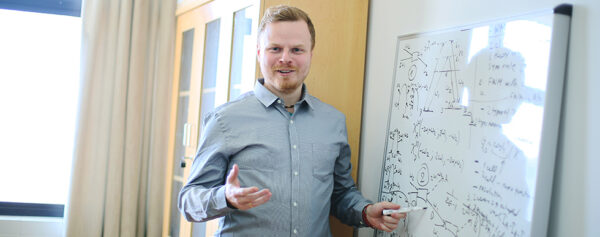About The Speaker
Konstantin E. Dorfman was born in Russia. He completed his B.S. degree in Physics from Nizhny Novgorod State University, Russia, in 2006. In 2009 he completed his Ph.D. degree at Texas A&M University. From 2009 to 2015 he worked as a postdoctoral scholar at Princeton University, Texas A&M University, University of California, Irvine, and a staff scientist in Singapore Agency for Science, Technology and Research (A*STAR). Dr. Dorfman has been a Zijiang Endowed young professor of physics at State Key Laboratory of Precision Spectroscopy, East China Normal University, Shanghai from 2017 to 2023. Since 2023, Dr. Dorfman has been a professor at School of Physics. Hainan University, Haikou, China. His scientific interests include atomic, molecular, optical, and chemical physics, quantum and nonlinear optics and photonics, X-ray optics, ultrafast phenomena, and quantum thermodynamics. Dr. Dorfman published over 80 research articles in scientific journals including high impact publications in Review of Modern Physics, PNAS, PRL, Nature Communications, JACS, Chemical Reviews, Accounts of Chemical Research.
Event Details
In the first part of the talk we will discuss how new quantum phenomena in complex systems can be studied and controlled using advances in both quantum optics and nonlinear spectroscopy. In particular, I investigate how to probe, control, and image the spectral information of these complex systems using squeezed quantum state of light generated via four-wave mixing and reveal the material information, which is not accessible by conventional classical photonics tools.
In the second part of the talk we will discuss a novel method for monitoring electronic coherences using ultrafast spectroscopy. This method is based on the time-domain high-order harmonic spectroscopy where a coherent superpostion of the electronic states is first prepared by the strong optical laser pulse using a three-step mechanism introduced by Lewenstein and Corkum. The coherent dynamics can then be probed by the higher order harmonics generated by the delayed probe pulse. A semi-perturbative model based on the Liouville space superoperator approach is developed for the bookkeeping of the different orders of the nonlinear response for the high-order harmonic generation using multiple pulses. Coherence between bound electronic states is monitored in the harmonic spectra from both the first and the second order responses and investigate nonadiabatic dynamics of conical intersections and avoided crossings. Furthermore, the nature of the multi-wave mixing in high harmonic regime allow to modify the statistics of light and give rise of quantum squeezing between higher harmonics suitable for higher signal-to-noise ratio measurements of electronic properties in multi-eV range.
In the last part of the talk we will present the metasurfaces as a novel platform for optical spectroscopy. Relying on the local orientation of nanostructures, Pancharatnam–Berry (PB) metasurfaces are currently enabling a new generation of polarization sensitive optical devices. A systematical mesoscopic description of topological metasurfaces is developed, providing a deeper understanding of the physical mechanisms leading to the polarization-dependent breaking of translational symmetry in contrast with propagation phase effects. Our theoretical model, which allows clear understanding of PB phase is proven in an experimental measurement involving Mach-Zehnder interferometric setup. We further demonstrate that the reconstruction of a multidimensional nonlinear polarization response of a nanomaterial can be achieved in a single heterodyne measurement by active manipulation of the polarization states of incident light. Using multidimensional spectroscopy, we show the possibility to track both stationary and transient delocalized charge distributions via detecting plasmonic populations and coherences.
